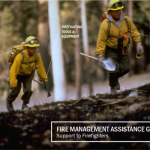BATON ROUGE, La. – Nearly a decade after hurricanes Katrina and Rita devastated Louisiana, hard-hit communities are coming back stronger than ever. To date, assistance to Louisiana’s residents and communities from the Louisiana Governor’s Office of Homeland Security and Emergency Preparedness (GOHSEP) and the Federal Emergency Management Agency totals more than $19.6 billion.
“Louisiana is more prepared today than ever before,” said GOHSEP Director Kevin Davis. “That’s a tribute to the local, state and federal partnership we have created in Louisiana, focused on preparedness and resiliency.”
The more than $19.6 billion in federal disaster assistance has made its way to Louisiana cities, parishes and citizens through FEMA’s Individual Assistance, Public Assistance and Hazard Mitigation grant programs.
That includes nearly $5.8 billion in Individual Assistance grants provided to nearly 916,000 individuals and families affected by hurricanes Katrina and Rita in Louisiana. More than $5.5 billion of the total was provided within a year of the storms, giving residents a helping hand in rebuilding their lives and restoring livelihoods.
The total also includes nearly $12.4 billion obligated in Public Assistance reimbursements to the state and local governments, and eligible private nonprofit organizations; and more than $1.4 billion obligated for mitigation projects to build stronger, safer, more resilient communities. FEMA continues to reimburse the State of Louisiana for 100 percent of the costs for projects under the Public Assistance and Hazard Mitigation Grant programs.
To date, nearly 80 percent of the currently projected repair and replacement costs under the Public Assistance program for Katrina have been disbursed to applicants. Under Hurricane Rita’s Public Assistance program, 90 percent of the repair and replacement costs have been disbursed.
Separately, the state and FEMA provided more than $321.5 million in Disaster Unemployment Assistance to nearly 185,000 survivors who lost jobs as a result of the hurricanes, and $17.9 million in Relocation Assistance so more than 10,000 families could return home to their communities.
In addition, FEMA funded one of the largest crisis counseling programs ever – providing more than $68.5 million to Louisiana Spirit to help adults and children identify ways to deal with the trauma and stress of surviving and recovering from the hurricanes. Louisiana Spirit is a federally-funded crisis counseling and stress management program for individuals, families and groups affected by presidentially declared disasters across the state of Louisiana.
In addition to the $19.6 billion in grant program funding, the FEMA-administered National Flood Insurance Program paid more than $16.2 billion in claims to more than 215,000 policyholders in the state, while the U.S. Small Business Administration provided nearly $6.9 billion in low-interest disaster recovery loans to help homeowners, renters and businesses rebuild.
Although recovery from the storms has been a top priority, FEMA and local jurisdictions also considered the safety of residents in the future. With more than $23 million in FEMA assistance, Louisiana increased the number of jurisdictions with FEMA-approved hazard mitigation plans from just four to 68, including all 64 parishes in the state. Mitigation plans form the foundation of a community’s long-term strategy to reduce disaster losses and break the cycle of disaster damage, reconstruction and repeated damage.
While monetary assistance is vital to Louisiana’s recovery, it does not tell the full story of the state and federal family’s commitment to survivors since Katrina and Rita struck in 2005.
Through collaborative efforts, FEMA and GOHSEP conducted the largest housing operation in our nation’s history, providing temporary housing to nearly 74,000 families displaced by Katrina and another 11,000 families displaced by Rita. As of three years ago, all of these survivors had returned to longer-term housing.
“The success of Louisiana’s recovery so far has been all about solidifying and strengthening partnerships. It’s about coming together, finding common ground and focusing on rebuilding communities that are stronger and more sustainable for the future,” said Mike Womack of FEMA, director of the Louisiana Recovery Office.
For more information on Katrina and Rita recovery, including project highlights, photos, video and fact sheets, visit https://beta.fema.gov/katrina10. For further recovery information, photos and a calendar of Katrina and Rita anniversary events around Louisiana, visit GOHSEP’s Katrina 10th anniversary Web page at www.gohsep.la.gov/RECOVER/KATRINA-RITA-10-YEARS-LATER. Also visit FEMA on Twitter at twitter.com/femaregion6 and on Facebook at facebook.com/FEMA for further Katrina and Rita anniversary content in the coming days.
###
FEMA’s mission is to support our citizens and first responders to ensure that as a nation we work together to build, sustain, and improve our capability to prepare for, protect against, respond to, recover from, and mitigate all hazards.
The SBA is the federal government’s primary source of money for the long-term rebuilding of disaster-damaged private property. SBA helps businesses of all sizes, private non-profit organizations, homeowners and renters fund repairs or rebuilding efforts and cover the cost of replacing lost or disaster-damaged personal property. These disaster loans cover losses not fully compensated by insurance or other recoveries and do not duplicate benefits of other agencies or organizations. For more information, applicants may contact SBA’s Disaster Assistance Customer Service Center by calling 800-659-2955, emailing disastercustomerservice@sba.gov, or visiting SBA’s website at sba.gov/disaster. Deaf and hard-of-hearing individuals may call (800) 877-8339.
Link to article:




